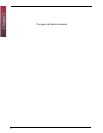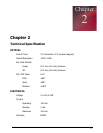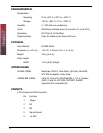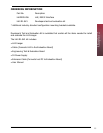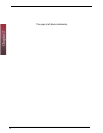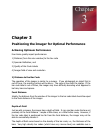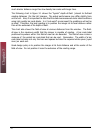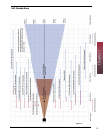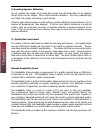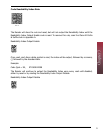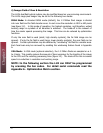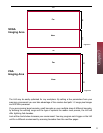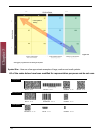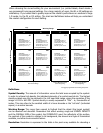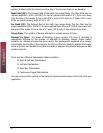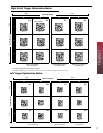
Chapter 3
20
Chapter 3
21
2) Avoiding Specular Reection
Do not position the imager at an angle that causes the LED illumination to be reected
directly back into the imager. This is called specular reection. Too much reected light
can “blind” the imager preventing a good decode.
If the bar code label is located on a at surface, specular reectivity occurs between 0 to 10
degrees off perpendicular. (See diagram) If the bar code label is located on a cylindrical
surface, such as a test tube, the angle of specular reection is measured tangent to the
curve. If the curved surface is also moving, there may be more than one position causing
specular reection.
3) Quality Bar Code Labels
The quality of the bar code label can affect the scanning performance. Poor quality labels
are more difcult to decode and may result in non-reads or potential misreads. The bar
code label should be printed to specications. This means that the bars are printed within
spec, with the correct widths, no ink spread, crisps edges and no voids. There should be
a sufcient quiet zone on both end of the bar code label. For best results, the paper or
label stock should have a matte nish to diffuse light. The print contrast signal (which is
a comparison of the reectance of the bars and the background stock) should be as high
as practical.
Barcode Readability Index
The Readability Index provides a measurement of a specic symbol’s ease or difculty to
be decoded by the LH2. The Readability Index is specic to the LH2, and should not be
confused with a verication quality measurement.
The Readability Index is a blend of information obtained from the internal operations of the
decoding algorithm pertaining to contrast, symbology construct, error detection, forward
error correction (if applicable), and other symbology-specic characteristics.
The Readability Index is a score on a scale of 01 (very poor) to 100 (very readable).
Due to differences based on motion, skew, reection, focus, and ambient lighting, the
Readability Index on the same symbol may vary somewhat from read to read. However, a
poor contrast or damaged symbol will score lower than a high contrast undamaged symbol.
The Readability Index can be used as a quick check on the reliability of label generation or
marking systems. When determining the ideal distance from the reader to the symbol, and
constant ambient light, the Readability Index provides a symbol quality assurance tool and
check point for feedback to an overall label or marking quality control system.
The Readability Index is enabled by rst reading a CodeXML rule into the permanent LH2
Memory.



